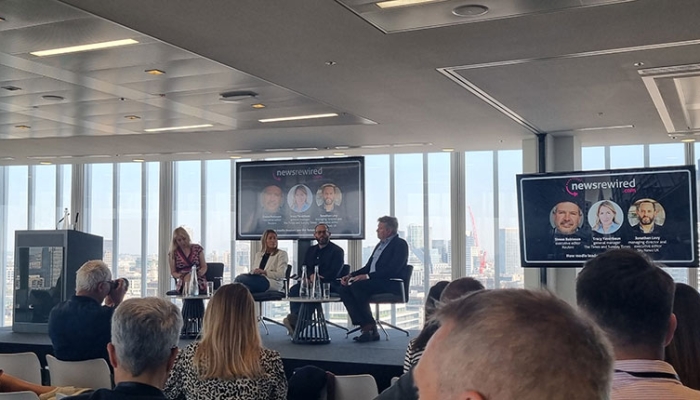The ever-changing landscape of news and what this means for PRs
The future of the news media is in flux, but what impact does that have on PRs and their relationships with journalists? At the recent Newsrewired conference, media leaders from Sky News, The Times, and Reuters shared how their organisations are adapting and what they expect the future of news to look like.
Switching up the business model
Media organisations always have to be adaptable and for Tracy Yaverbaun, general manager of The Times and The Sunday Times, that has meant considering ‘value reinvention’:
‘Customers have too many subscriptions. That means we have to sharpen the value that we offer. It means really rich bundles so audio, events, perks, and how to tell stories in a cleaner user experience that feels really worth it, and really focusing on retention.’
Other businesses have also been making changes. Simon Robinson, executive editor of Reuters, explained how the organisation has ‘pivoted a little more to a B2C revenue stream by putting the website behind a paywall’. Since making that change in October, subscriptions have exceeded 100,000. Sky News is planning for the future with its 2030 strategy which, according to managing director and executive Jonathan Levy, is about a ‘premium video-first newsroom built for the digital future’.
What does this mean for PRs? A lot of the major publishers and national newspapers are reconsidering their business models. The way they interact with PRs will change as they prioritise online (video, podcast, etc.), requiring information in a new format. Plus, with more content going behind paywalls, readers are expecting higher quality and PRs can help provide that with expert sources and quotes.
Reflecting the audience in the newsroom
Younger audiences have traditionally been more difficult for news organisations to engage, but their rise in social media use presents an opportunity for journalists to reach them. Sky News’ Jonathan said:
‘Consumption is changing needs. Newsrooms have always been this confusion of experience between the job, which is actually key to journalism and key to the values of organisations, and allowing for new ideas. We need to be more open to those new ideas.’
Those new ideas are tending to come from younger reporters who want to tell stories in different ways. Tracy said at The Times there is a ‘well trodden path of how you climb the ladder’ but now the organisation is ‘much more flexible and wants to attract different types of voices and storytelling’.
Reuters is also looking to better reflect the audience that it covers, within its newsroom, as Simon explained:
‘We believe that the strength of the newsroom comes from reflecting the world that we cover. We’re a big global newsroom and have about 120 languages spoken, so hiring a diverse newsroom is a huge help in that.’
What does this mean for PRs? Newsrooms are likely to become younger and more diverse. These journalists will be looking to cover different topics in different ways. Emailing a press release is unlikely to grab their attention or be useful for them if they are doing, for example, an audio piece. Think about more impactful campaigns that are going to engage those younger journalists, and the younger readers as a result.
Embracing AI and new formats but staying vigilant
The use of AI in the media has been another question for publishers to consider in recent years and for Simon at Reuters, it’s one he is ready to embrace:
‘I think we see the future as a real combination of human and AI generated, or AI proofed, content. It also opens up the possibility to provide narration in different languages. In a sense, it augments what we’re already doing and potentially opens the market a little more’.
At The Times, the newsroom is experimenting with a tool that presents articles in a visual format that goes beyond simple reading. Sky is also looking at delivering news in various formats, finding great success with its audio and video Trump100 podcast, which has just hit 5 million downloads.
However, it does also present its problems for journalism. AI chat interfaces are causing issues with discoverability alongside disruption with search on platforms such as Google. There has also been an increase in deepfakes and misinformation. Tracy believes that the industry needs to collaborate to ‘deal with how Google values news’ and that having a direct relationship with audiences can show that news organisations are great for ‘high trust-based sources’.
What does this mean for PRs? AI has a lot of benefits for journalists, but isn’t 100% reliable when it comes to sources yet. The media still needs PRs to provide those trustworthy sources. This includes everything from expert bits of advice and information, to images from events, and that’s where you come in…
To connect with the media and provide journalists, broadcasters, and influencers with the contributions they need, check out the ResponseSource Journalist Enquiry Service.
Want more on how ‘traditional’ news is evolving? Download Vuelio report ‘TikTok journalism: The platform’s impact on news audiences‘.


Leave a Comment